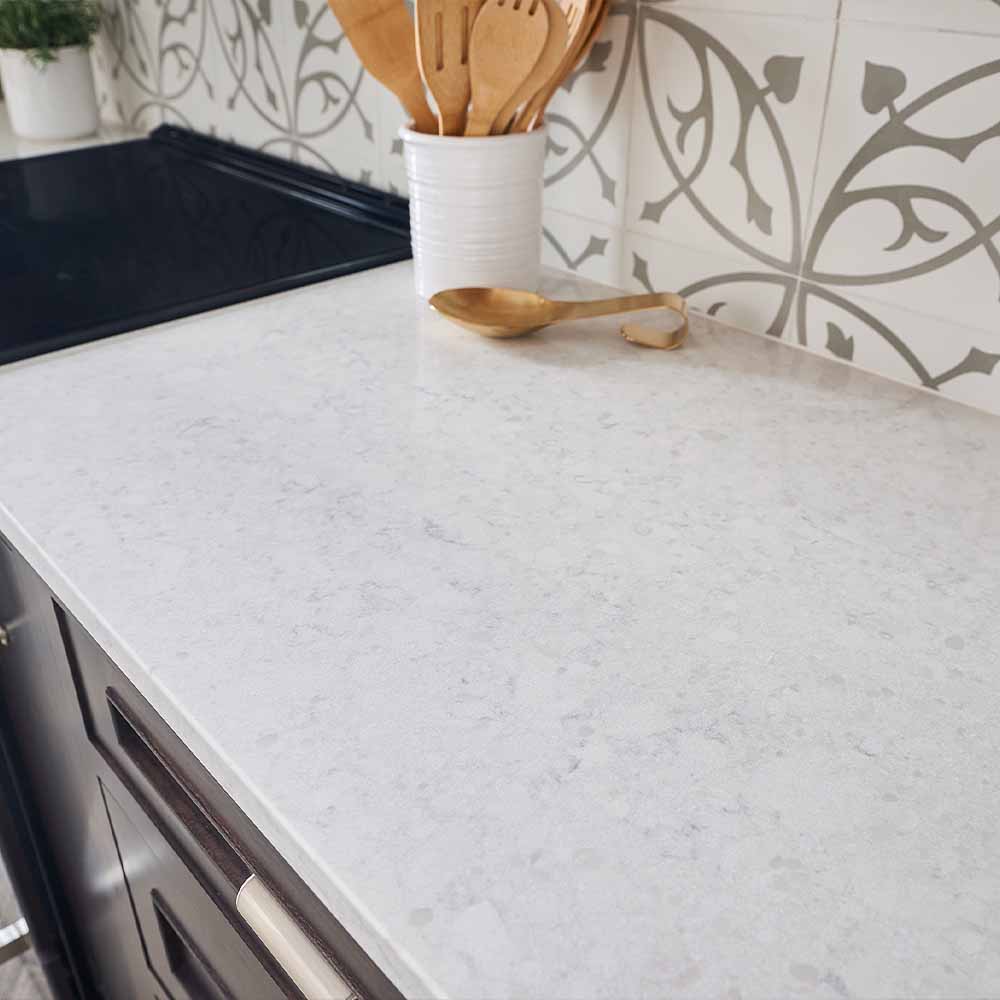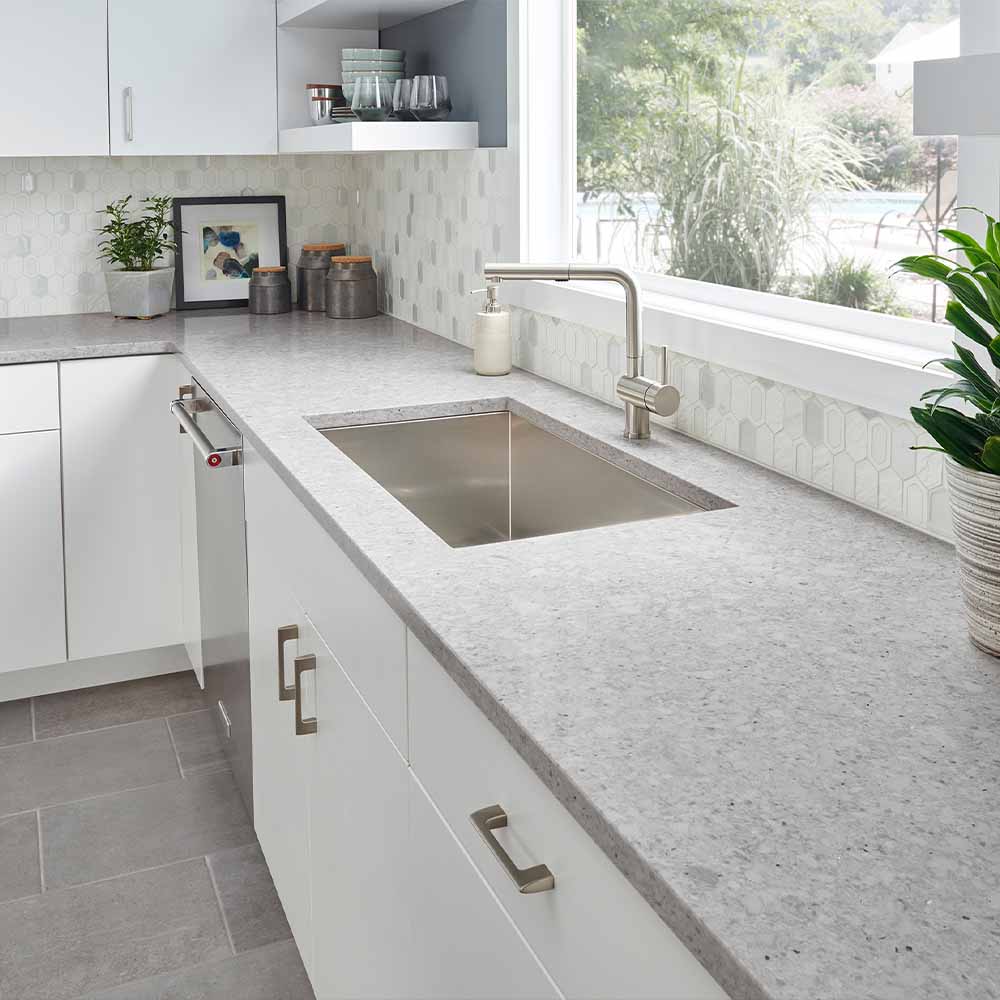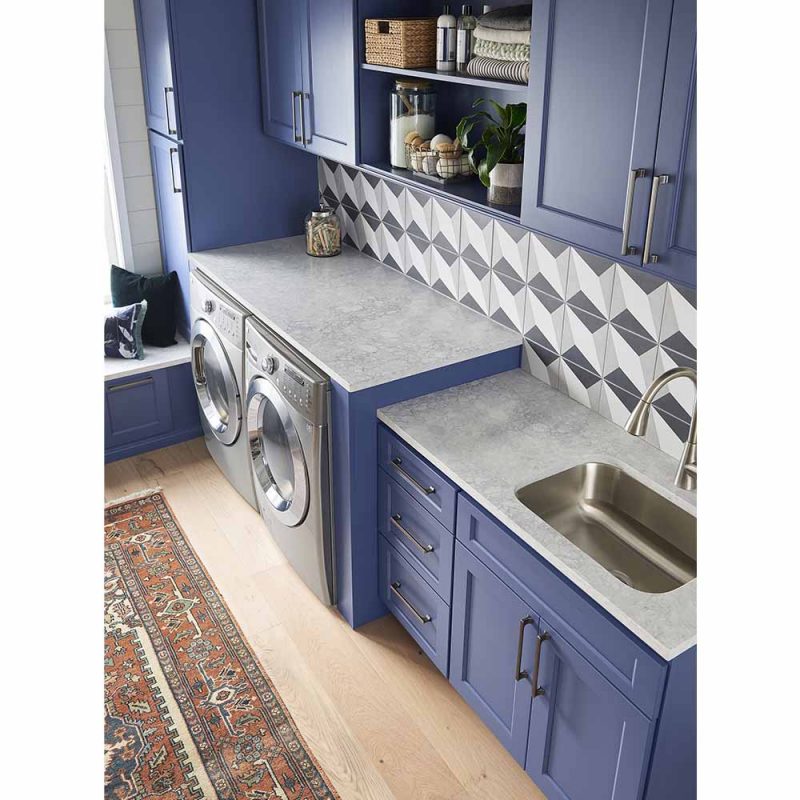When remodeling your kitchen or bathroom, selecting the right countertops can significantly influence both the functionality and style of your space. Among the various materials available, quartz countertops have gained immense popularity due to their durability and aesthetic appeal. However, choosing the right quartz countertop involves more than just picking out a color. For those considering quartz, options provided by Fairfax Marble combine both quality and elegance, ensuring a premium selection for your remodeling needs. Here are some critical considerations to ensure you make the best choice for your home.

This may interest you: Embracing Quartz Countertops: The New Era of Kitchen Design
1. Understand the Composition of Quartz Countertops
Firstly, it’s essential to understand what quartz countertops are made of. Despite the name, these countertops are not solid quartz. They are engineered stones comprising 90-95% crushed quartz and 5-10% resins, polymers, and pigments. This composition makes them non-porous, stain-resistant, and more durable than natural stone, which are significant advantages to consider in your decision-making process.
2. Assess the Quality and Price
Quality can vary significantly between different quartz brands and products. Higher quality quartz will offer better durability, more uniform patterns, and color consistency. However, this comes at a price. Determine your budget beforehand and weigh it against the quality of quartz you are considering. Remember, investing in a higher quality countertop can save you money in the long run due to its longevity and lower maintenance requirements.

3. Choose the Right Color and Pattern
Quartz countertops come in a wide range of colors and patterns, including designs that mimic natural stone like granite and marble. When choosing the color and pattern, consider the overall design of your room and how the countertops will complement the existing elements. Neutral colors can offer flexibility, while bold colors can make a statement. Additionally, understand that samples can differ from the full slab, so if possible, view the actual slab before making a decision.
4. Consider Thickness and Edge Profile
The thickness of quartz countertops typically ranges from 1/2 inch to 1 1/2 inches. Your choice should depend on the application and your aesthetic preference. Thicker countertops can provide a more substantial look, which is often desirable for kitchen islands or dining tables. Additionally, the edge profile, from simple bevels to more elaborate ogee or bullnose edges, can significantly impact the overall look and feel of your countertops. Discuss with your fabricator to understand the options and costs associated with different thicknesses and edge profiles.
5. Pay Attention to Maintenance and Durability
One of the significant advantages of quartz countertops is their ease of maintenance. They are non-porous, so they don’t require sealing and are resistant to staining. However, they are not indestructible. Avoid exposing them to excessive heat, and use cutting boards and trivets to prevent scratches and thermal shock. Understanding how to care for your quartz countertops will help ensure they look great for years to come.

6. Warranty and Installation
Finally, consider the warranty offered by the quartz manufacturer. A good warranty can provide peace of mind, covering potential manufacturing defects. Additionally, professional installation is crucial for quartz countertops. Proper installation ensures your countertops are correctly measured, cut, and installed, minimizing the risk of damage and ensuring they are level and secure.
Conclusion:
Choosing the right quartz countertops involves a blend of aesthetic preferences and practical considerations. By understanding the material’s composition, considering quality and price, selecting the right color and pattern, and paying attention to thickness, edge profiles, maintenance, and durability, you can ensure that your quartz countertops will be a beautiful and functional addition to your home for years to come. Remember, quartz countertops are an investment in your home’s value and your daily living experience, so take your time to make an informed decision.
1. How do I choose the right color and pattern of quartz countertops for my kitchen?
Answer: When selecting the color and pattern for your quartz countertops, consider the overall design and color scheme of your kitchen, including cabinets, flooring, and wall colors. Opt for colors that complement or contrast nicely with your existing decor. Also, think about whether you want a uniform look or one with more variation. Bring home samples to see how they look in your kitchen’s lighting. Remember, quartz comes in a wide variety of colors and patterns, including options that mimic natural stone.
2. What thickness should I choose for my quartz countertops, and why does it matter?
Answer: Quartz countertops typically come in thicknesses of 1 cm, 2 cm, or 3 cm. The choice of thickness depends on the application and your aesthetic preference. Thicker countertops provide a more pronounced look, which is ideal for kitchen islands or as a statement piece. Thinner countertops are often used for sleek, modern designs and may require additional plywood support. Consider the visual impact you want to achieve and discuss the functional implications with your fabricator or designer.
3. Are all quartz countertops the same quality, and how can I tell the difference when choosing?
Answer: No, quartz countertops can vary significantly in quality based on the manufacturing process and the proportion of natural quartz to resin and pigments. High-quality quartz countertops have consistent colors and patterns and are more durable and less prone to discoloration and defects. When choosing, look for reputable brands like Fairfax Marble, ask about the quartz’s composition, and check for certifications or warranties that may indicate a higher standard of quality.

